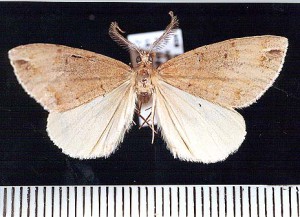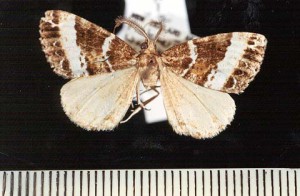HortResearch, New Zealand
HortResearch is a New Zealand government-owned research company, I worked here at a Research Associate in the Biosecurity team from March 2003 til August 2007. (HortResearch has now merged with Crop & Food Research to form Plant & Food Research.)
Here, I was involved in a wide range of invasive-species related projects, focusing on current and potential invasive insect species. Many of the projects I was involved with relate to the successful eradication of painted apple moth (Teia anartoides) from Auckland. Link
The projects covered three broad areas:
1) Ecology of invasive species
Projects in this area include:
- analysing field collections of painted apple moth to determine patterns of host use, Link
- host-range testing of gum-leaf skeletoniser (Uraba lugens) host-plant preferences to determine its potential impact. Link
- testing the potential of the generalist parasitiod, Meteorus pulchricornis to control painted apple moth. Link
- investigating patterns of ant invasion in New Zealand. Link
2) Investigation of control options
I was involved in a range of projects optimsing the sterile insect technique for control of painted apple moth and later, lightbrown apple moth (Epiphyas postvittana). I was involved in a range of experimental studies, these considered ways to improve the painted apple moth programme Link Link, and the radiation biology of lightbrown apple moth Link. I was also involved in a series of modelling studies, which considered how to optimised control through the use of the oxymoronic inherited sterility Link, to optimise release strategies Link, and to make releases more cost-effective Link.
Semiochemical based projects were to investigate behavioural antagonists (opposite of attractants) as a control option for codling moth and lightbrown apple moth Link and assisting with the evaluation of replacement lures for fruit fly surveillance. Link
3) Niche modelling to quantifying the threat presented by potential invaders
This research involves using tools such as CLIMEX (CSIRO software) to predict the where invasive insect species may occur under current and climate change conditions. The main focus has been fruit flies (Tephritidae) where my co-authors and I considered the distribution of Oriental fruit fly globally Link and, in NZ and the Pacific Link. This research is now being expanded to consider a wider range of species.
An earlier project considered the potential population dynamics of Thrips palmi in NZ using Dymex software (also CSIRO) Link
Master’s research
For my Master’s thesis I looked at the biogeographical patterns and host-plant associations of an endemic genus of New Zealand moths, Pseudocoremia. Unique species also occur on the Chatham Islands and on Norfolk Island.
As part of this work I named five new species, two of which are shown here.
The two new species shown are published here, in this paper we also reversed a synonymy. The other three new species are published here.
Biogeographic patterns were dominated by a large number of widespread taxa – most likely due to dispersal following speciation events. Localised taxa tend to have brachypterous females limiting their dispersal abilities.
Host plant patterns vary widely in the genus. Some species, such as the forestry pest, Pseudocoremia suavis, feed on a large number of unrelated species while other species are restricted to plants within a single genus e.g. P. modica feeds only on Hebe. Related species tend to feed on similar plants – all species in the P. modica complex feed on Hebe (where known) with the exception of P. berylia, which feeds on Celmisia and P. ombrodes, the Chatham Island species, which is polyphagous.


